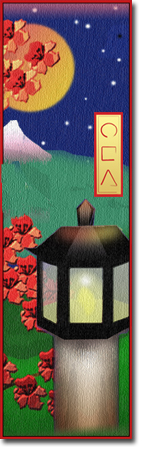On The Way: The Daily Zen Journal
Questions of Bodhisattva Mahamati
Buddha
The Bodhisattva Mahamati requested the Buddha’s instructions on the way to cultivate the path of the bodhisattva.
The Buddha answered, “Mahamati, the bodhisattva cultivates the path by practicing the four ways

“The first is to see that all that exists appears from the mind. The three realms of existence cannot exist independent of the mind.
“The realms originate from one’s idea of ‘I’ and ‘mine.’ They are never in a state of going or coming, but because of enduring habits, which developed a long time ago, they appear as the three realms.
“Thus we must see that all things that exist, actions, words, bondage, the human body, treasures, or places of residence are all the results of discriminations.
“The second is to discard thoughts on arising, abiding, and perishing and to see that all is like a dream. This is because there is nothing that came into being by itself, nor is there anything created by another.
“Furthermore, nothing comes about through itself and others. Things are the creations of one’s mind, and they have no substance. Now, if there is no substance in external things, the discriminating mind cannot be aroused. Knowing that it is only by discrimination that the three realms exist, there is nothing inwardly or outwardly, to grasp. All is like a dream, devoid of arising, abiding, and perishing. The bodhisattva, upon realizing this, is freed from the ideas of arising and perishing.
“The third is to contemplate on the absence of self-nature among external objects. One perceives all things to be like a mirage or dream. One perceives that all things owe their existences to worthless arguments, a variety of attachments, and deluded habits and that originally and in actuality, all things are without a substantive nature.
“The fourth is to view all that exists in this manner and to seek the highest wisdom.”
The Bodhisattva Mahamati then asked the World-Honored One about the nature of nirvana.
To this, the Buddha responded, “The state of nirvana is attained by overturning the delusive feeling that fills the self-nature of the unenlightened mind, the habitual forces of the alaya-vijnana (the seventh ego-grasping consciousness), and one’s mind. This realm is identical with that state in which a person realizes that the very nature of all that exists is characterized by emptiness and is also identical with the sacred wisdom free from the categories of cessation of existence, everlasting existence, existence, and nonexistence.
“Furthermore, there is no disintegration in nirvana, nor is there death. Suppose there were such a thing as death; then we must suppose that there is birth. If there is such a thing as disintegration, that means that things change. Nirvana is where there is no disintegration and no death; it is the realm where all who cultivate the path will arrive. Nirvana does not discard the dharmas in the mundane world; it is neither identical with the mundane dharmas nor different from them.”
Dialogue between the Buddha and Bodhisattva Mahamati
Source –Buddha Dharma – The Way to Enlightenment – Numata Center for Buddhist Translation 2003





Each of Mahamati’s questions requires time to absorb and appreciate the Buddha’s response. In essence, they are the universal questions of life here and now, but the answers are addressed to a bodhisattva rather than a beginner practitioner. One can assume he is asking for the benefit of the practitioners present listening to the exchange.
The first section elucidating the four ways to follow in becoming a bodhisattva starts at the most advanced principle of practice “see that all that exists appears from the mind.” The second understanding is “to see that all is like a dream.” From there we are asked to see that “all things are without a substantive nature. The fourth is to view all that exists in this manner and to seek the highest wisdom.”
So there, in a metaphysical nutshell, is the core of practice. The answer to the question on the nature of nirvana is a certain stretch that exhausts our powers of comprehension. And the following questions require contemplation and “more practice” to cozy up to what they may be pointing at.
Even when we don’t understand things, it is always good to allow them to wash over us and percolate somewhere deep within to ripen at a later time. We don’t have to get everything right away; in fact, that is almost impossible anyway, but we can keep company with these gems and allow them to work on us.
Amazed once again,
Elana, Scribe for Daily Zen